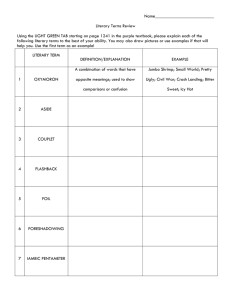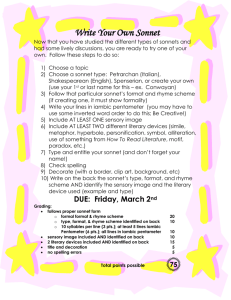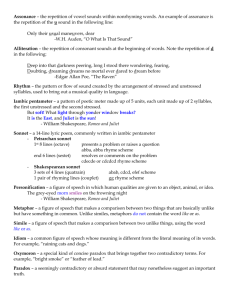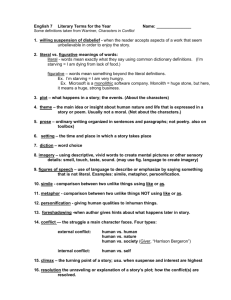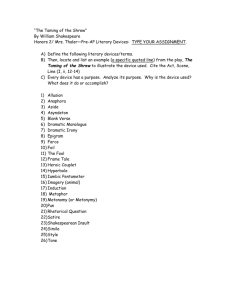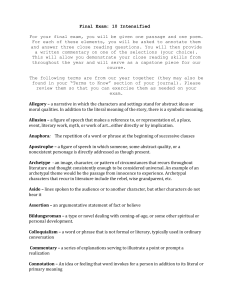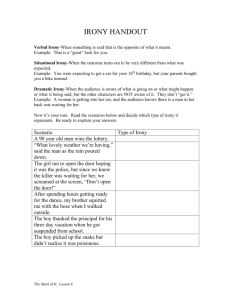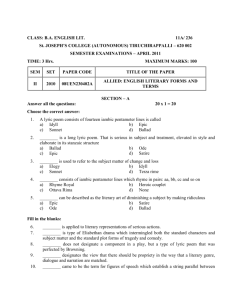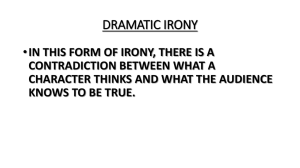Romeo and Juliet Vocabulary and Literary Terms
advertisement
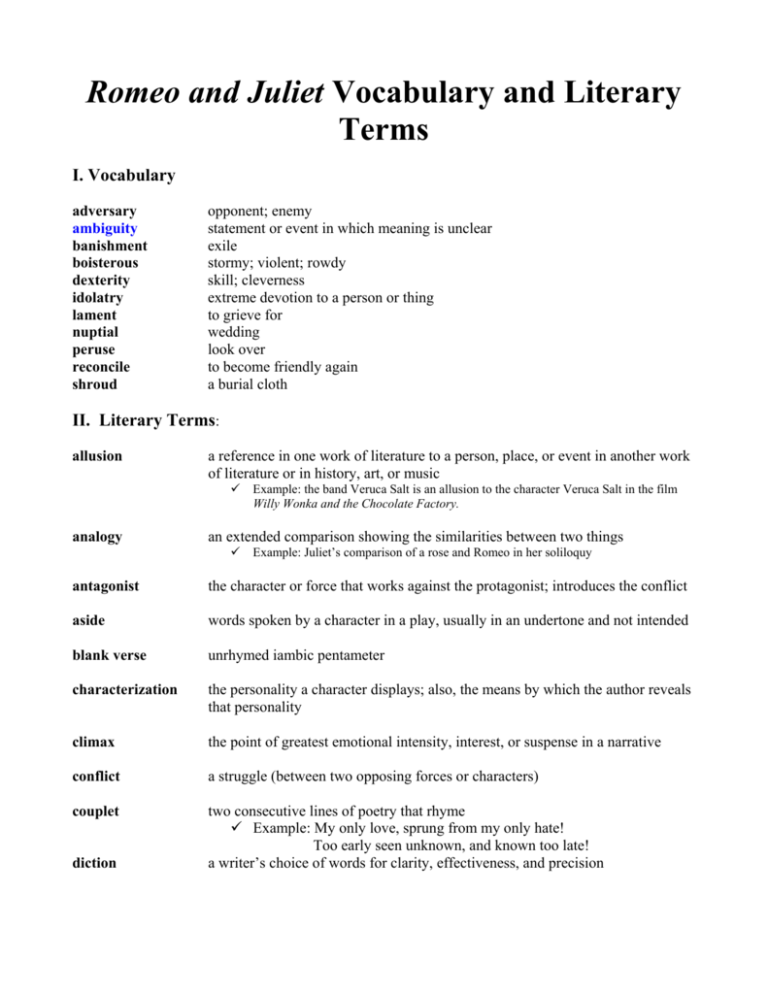
Romeo and Juliet Vocabulary and Literary Terms I. Vocabulary adversary ambiguity banishment boisterous dexterity idolatry lament nuptial peruse reconcile shroud opponent; enemy statement or event in which meaning is unclear exile stormy; violent; rowdy skill; cleverness extreme devotion to a person or thing to grieve for wedding look over to become friendly again a burial cloth II. Literary Terms: allusion a reference in one work of literature to a person, place, or event in another work of literature or in history, art, or music Example: the band Veruca Salt is an allusion to the character Veruca Salt in the film Willy Wonka and the Chocolate Factory. analogy an extended comparison showing the similarities between two things Example: Juliet’s comparison of a rose and Romeo in her soliloquy antagonist the character or force that works against the protagonist; introduces the conflict aside words spoken by a character in a play, usually in an undertone and not intended blank verse unrhymed iambic pentameter characterization the personality a character displays; also, the means by which the author reveals that personality climax the point of greatest emotional intensity, interest, or suspense in a narrative conflict a struggle (between two opposing forces or characters) couplet two consecutive lines of poetry that rhyme Example: My only love, sprung from my only hate! Too early seen unknown, and known too late! a writer’s choice of words for clarity, effectiveness, and precision diction dramatic irony a contrast between what the audience perceives and what a character does not know dramatic structure the structure of a play epithet a descriptive adjective or phrase used to characterize someone or something. (Peter the Great). Example: Romeo! Humors! Madman! Passion! Lover! (II.i.7) figurative language language that is not intended to be interpreted in a literal sense foil a character who sets off another character by contrast foreshadowing the use of hints or clues in a narrative to suggest what action is to come iambic meter unstressed syllable followed by a stressed syllable Example: ǎ gain iambic pentameter five verse feet with each foot an iamb (a total of ten syllables) imagery language that appeals to any sense (sight, hearing, taste, touch, or smell) or any combination of the senses irony literary technique that portrays differences between appearance and reality (dramatic irony; situational irony; verbal irony) metaphor comparison between two unlike things with the intent of giving added meaning to one of them motivation a reason that explains or partially explains why a character thinks, feels, acts, or behaves in a certain way (Motivation results from a combination of the characters personality and the situation to be dealt with.) protagonist the main character in a play or story pun the humorous use of a word or phrase to suggest to or more meanings at the same time Romeo: The game was ne’er so fair, and I am done. Mercutio: Tut! Dun’s the mouse, the constable’s own word! If thou art Dun, we’ll draw thee from the mire. (I.iv.39-41) repetition the return of a word, phrase, stanza form, or effect in any form of literature (forms: alliteration; rhyme; refrain) monologue a long, uninterrupted speech presented in front of other characters oxymoron a figure of speech that combines apparently contradictory terms “sweet sorrow”; “loving hate” personification a figure of speech in which an animal, object, natural force, or idea is given a personality and described as human simile a comparison made between two dissimilar things through the use of a specific word of comparison such as like and as situational irony a contrast between what is expected and what really happens soliloquy a speech in which a character is alone on stage and expresses thoughts out loud sonnet a fourteen-line lyric poem, usually written in iambic pentameter, that has one of several rhyme schemes. A sonnet form used by William Shakespeare is called the Shakespearean sonnet. It has three four-line units (quatrains) followed by a concluding two-line unit (couplet). The most common rhyme scheme for the Shakespearean sonnet is abab cdcd efef gg. symbol any object, person, place, or action that has a meaning in itself and that also stands for something larger than itself—such as a quality, attitude, belief, or value. suspense that quality of a literary work that makes the reader or audience uncertain or tense about the outcome of events theme the central idea of a work of literature verbal irony a contrast between what is said and what is meant
